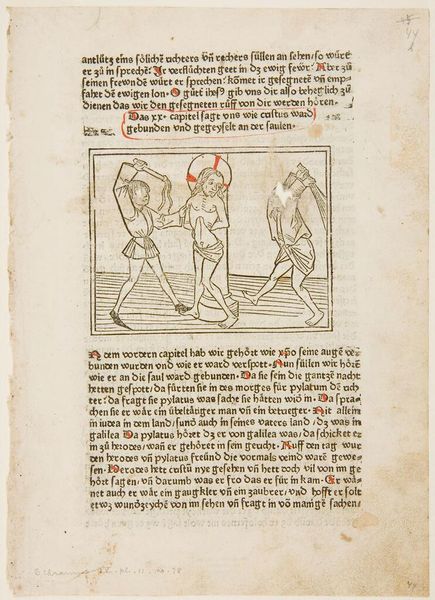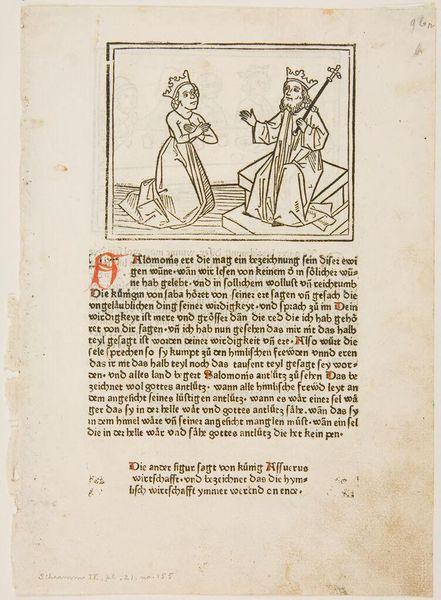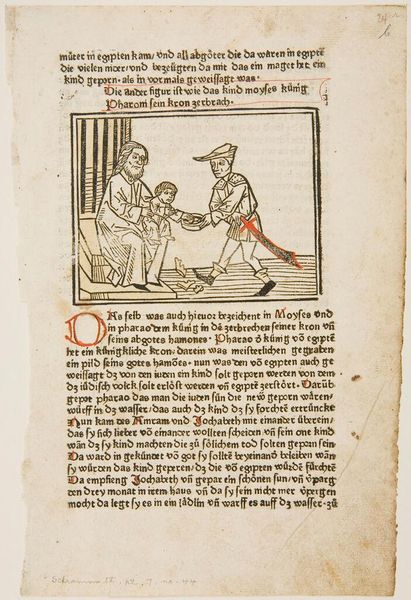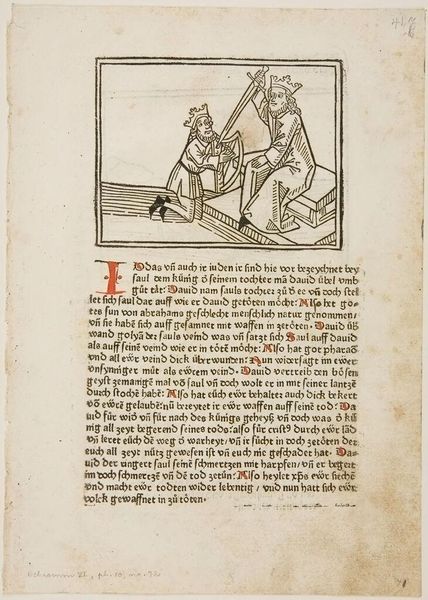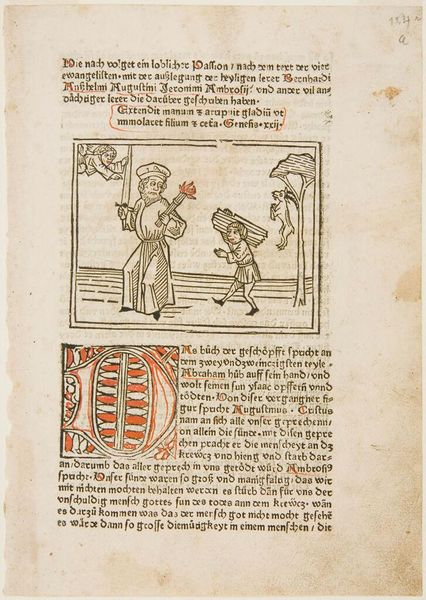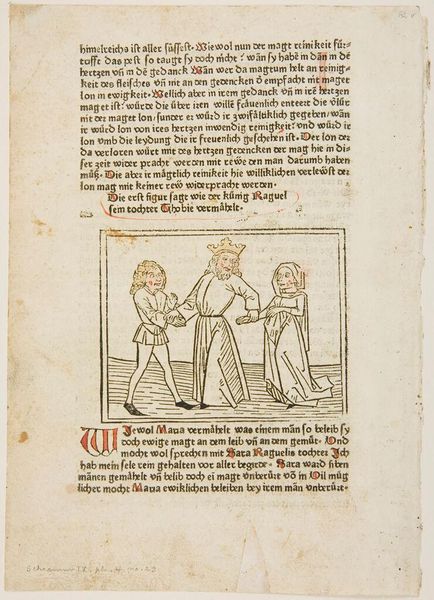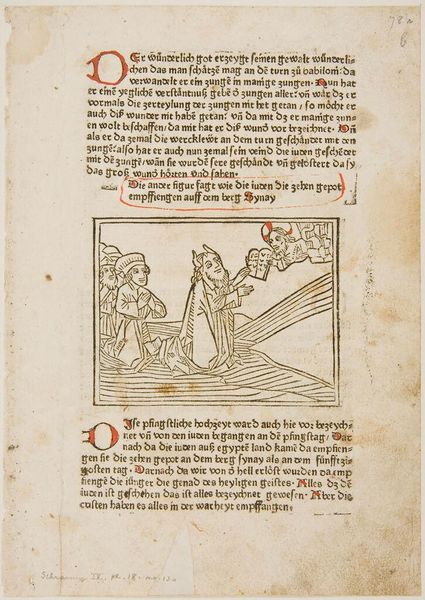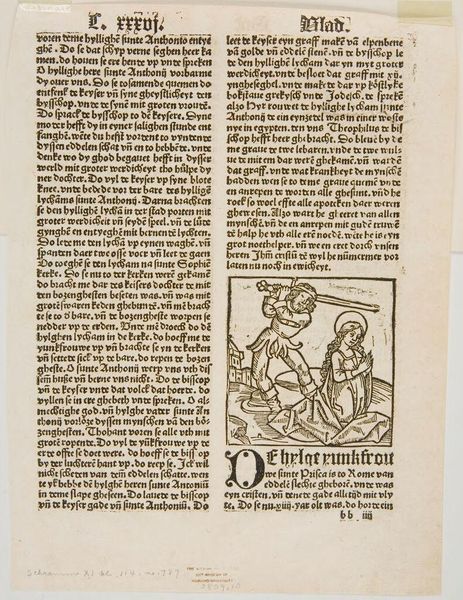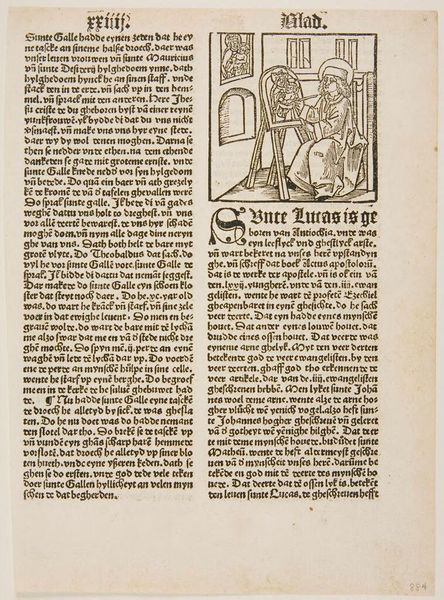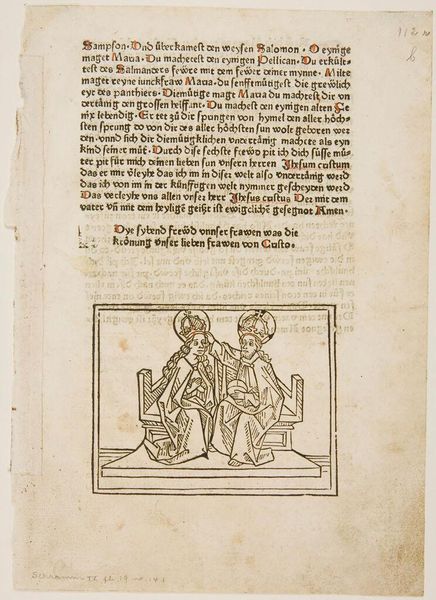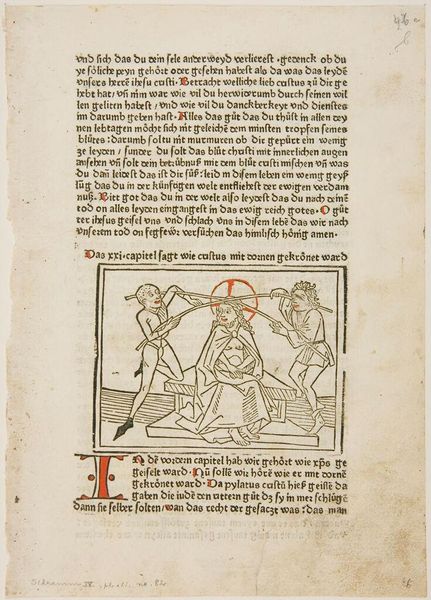
Copyright: CC0 1.0
Curator: Let’s discuss this intriguing piece, "Joab Greeting and Killing Amasay," an artwork from an anonymous artist, housed here at the Harvard Art Museums. It presents a rather stark image. Editor: It's striking, isn’t it? The immediate impression is one of betrayal masked in affection, a sinister contrast captured in simple lines. The figures, though crudely drawn, exude tension. Curator: Precisely! The visual language relies heavily on symbols. The embrace, typically a sign of warmth, becomes a tool for deception and violence. Notice how Joab’s gesture of greeting conceals his deadly intent. Editor: And consider Amasay's crown-like headgear. It gives him an air of authority, making his vulnerability all the more poignant. The artist skillfully uses recognizable visual cues to amplify the narrative's emotional impact. Curator: The medium itself matters here. This likely comes from a printed book, intended for a broad audience. This act, with its themes of power and deception, resonated deeply within its social context. The production suggests wider consumption of these ideas. Editor: I see that. It speaks to the enduring human capacity for treachery and the power of visual imagery to convey complex moral lessons across generations. Curator: Indeed. It offers a stark reminder of the potent, yet often deceptive, nature of appearances and the social contexts that shape such betrayals. Editor: A chilling scene, thoughtfully rendered.
Comments
No comments
Be the first to comment and join the conversation on the ultimate creative platform.

